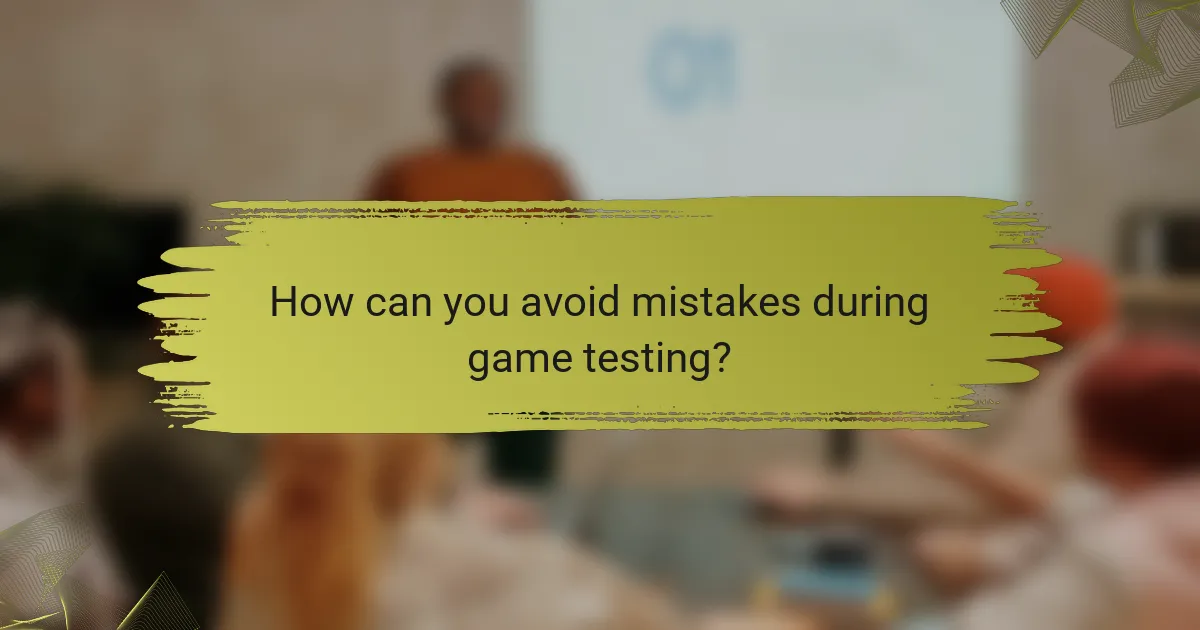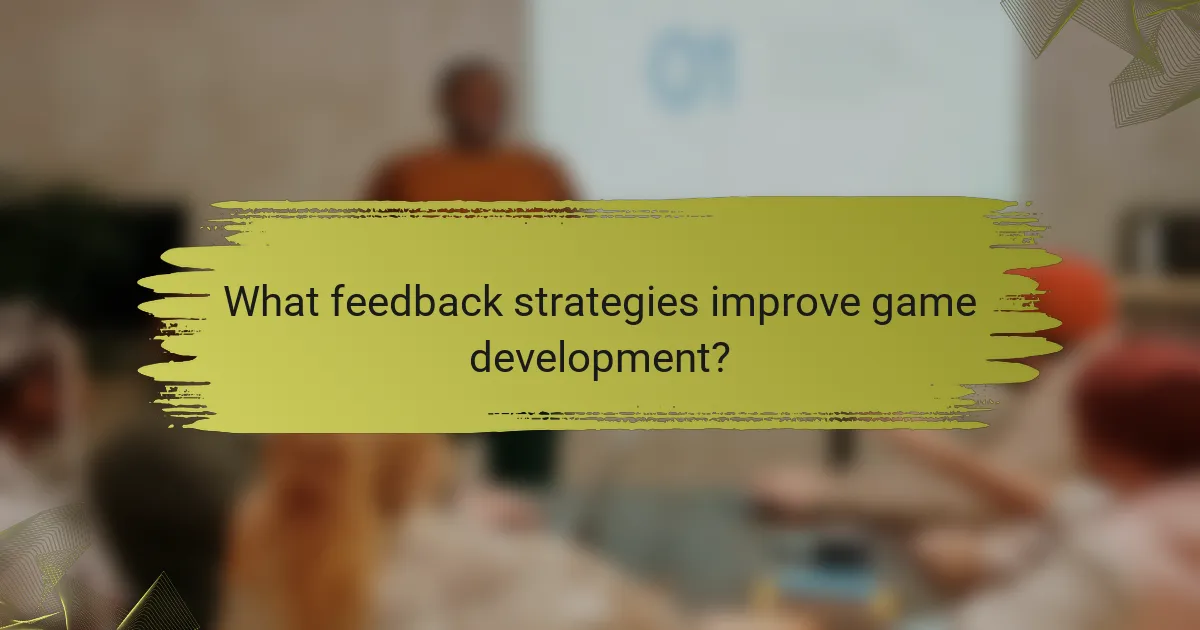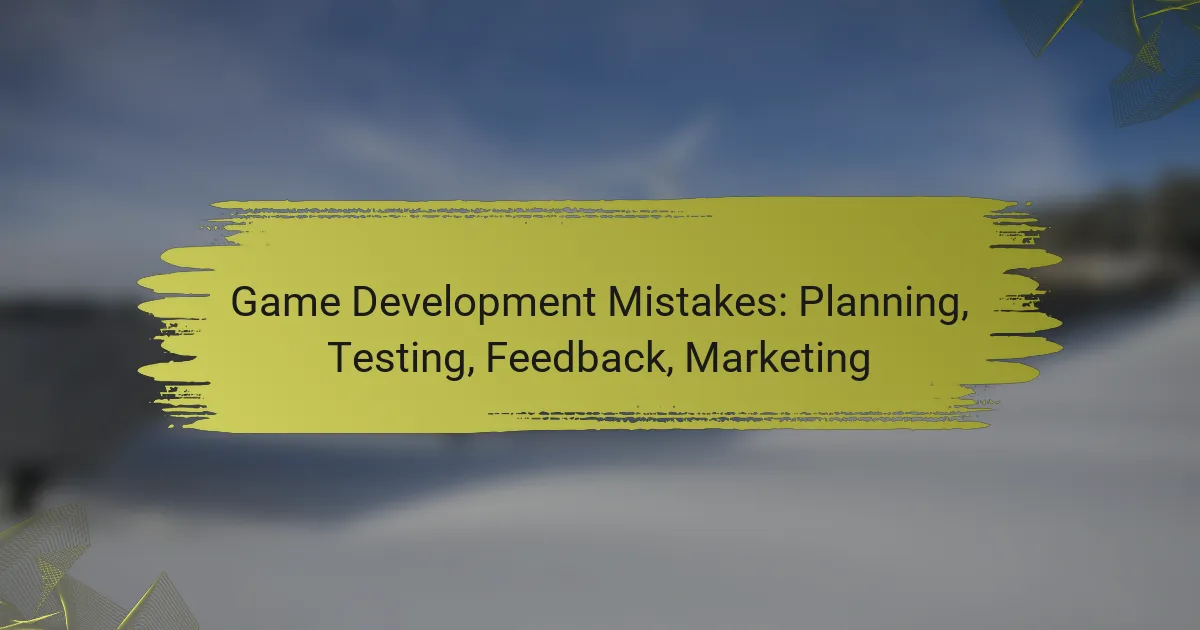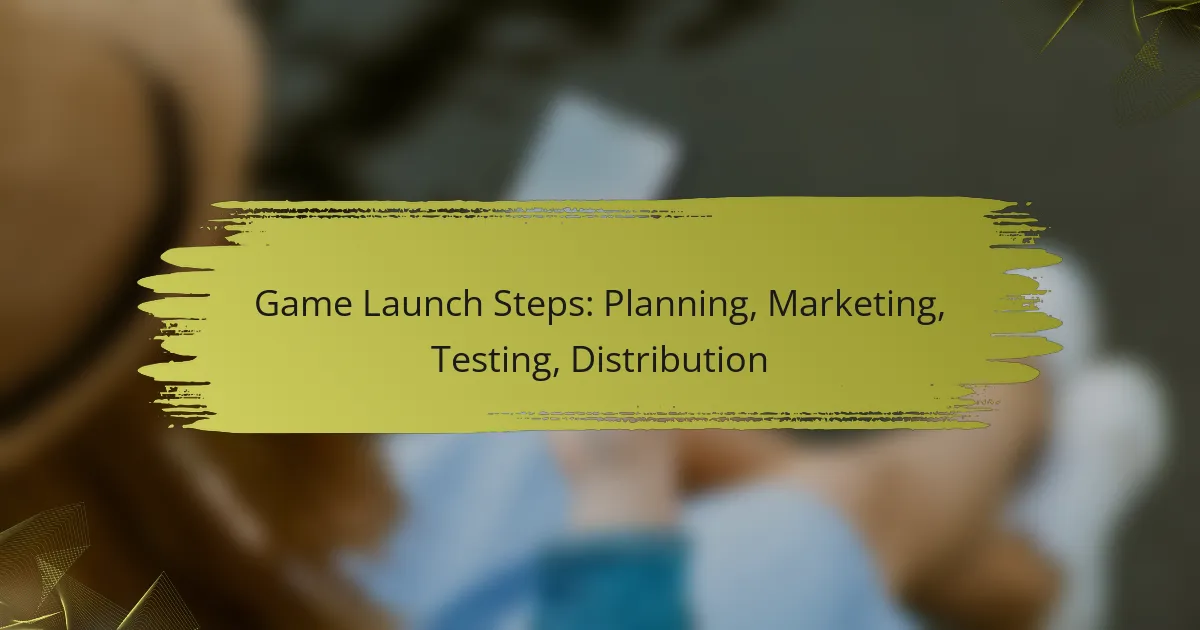Game development is a complex process that can be hindered by common mistakes in planning, testing, feedback, and marketing. Failing to conduct thorough market research or clearly define project scope can lead to wasted resources and an unsuccessful game. Additionally, prioritizing structured testing and actively seeking player feedback are crucial for enhancing game quality and aligning with player expectations.

What are common game development mistakes in planning?
Common game development mistakes in planning include failing to conduct thorough market research, not defining the project scope clearly, and neglecting the target audience. These oversights can lead to wasted resources and ultimately, an unsuccessful game.
Insufficient market research
Insufficient market research can result in developing a game that does not meet player expectations or fails to find its audience. Understanding market trends, competitor offerings, and player preferences is crucial. Conduct surveys, analyze existing games, and engage with communities to gather insights.
Consider using tools like Google Trends or social media analytics to gauge interest in specific genres or features. Aim for a balanced approach, dedicating a portion of your budget and time to research before diving into development.
Poor project scope definition
Poor project scope definition can lead to scope creep, where additional features are added without proper planning, causing delays and budget overruns. Clearly outline the game’s core features, timelines, and resources needed from the start. Use project management tools to track progress and adjust as necessary.
Establish a minimum viable product (MVP) to focus on essential elements first. This strategy allows for testing and feedback before expanding the project scope, ensuring that resources are allocated efficiently.
Ignoring target audience
Ignoring the target audience can result in a game that fails to resonate with players. Identifying your audience’s demographics, preferences, and gaming habits is essential for creating engaging content. Use personas to represent different segments of your audience and tailor your game design accordingly.
Engage with potential players early through beta testing or community forums. Their feedback can guide design choices and help refine gameplay mechanics, ensuring a more appealing final product.

How can you avoid mistakes during game testing?
To avoid mistakes during game testing, prioritize thorough planning, user feedback, and diverse testing environments. Implementing structured testing phases and actively seeking player input can significantly enhance the quality of your game.
Neglecting user feedback
Ignoring user feedback can lead to a disconnect between the game and its audience. Actively solicit input from beta testers and early players to identify pain points and areas for improvement. Consider using surveys or forums to gather insights on gameplay experience and preferences.
Incorporating user feedback not only helps refine gameplay mechanics but also fosters a sense of community. Players who feel heard are more likely to support your game and recommend it to others.
Inadequate testing phases
Skipping or rushing through testing phases can result in undetected bugs and gameplay issues. Establish a clear testing schedule that includes alpha, beta, and post-launch testing phases to ensure comprehensive coverage. Each phase should focus on different aspects, such as functionality, user experience, and performance.
Allocate sufficient time for each testing phase, ideally several weeks, to allow for thorough evaluation and iteration. This approach helps catch critical issues before they affect the wider player base.
Failing to test across platforms
Not testing your game across various platforms can lead to compatibility issues that frustrate players. Ensure that your game runs smoothly on different devices, operating systems, and screen sizes. This is particularly important for games intended for both PC and mobile users.
Utilize automated testing tools to streamline the process and cover a range of scenarios. Additionally, consider platform-specific guidelines to enhance performance and user experience on each device.

What feedback strategies improve game development?
Effective feedback strategies enhance game development by providing insights into player experiences and preferences. Utilizing methods like beta testing, player surveys, and community engagement helps developers refine their games and better meet player expectations.
Implementing beta testing
Beta testing involves releasing a game to a limited audience before its official launch. This strategy allows developers to gather real-world feedback on gameplay, bugs, and overall experience. It’s crucial to select a diverse group of testers to ensure varied perspectives.
To implement beta testing effectively, consider setting clear goals for what you want to learn and providing testers with specific tasks. This can help focus their feedback on critical areas. Additionally, be prepared to iterate based on the feedback received, as this can significantly improve the final product.
Utilizing player surveys
Player surveys are a direct way to gather structured feedback from your audience. These surveys can include questions about gameplay mechanics, story elements, and overall satisfaction. Keep surveys concise to encourage participation, aiming for around 10-15 questions.
When designing surveys, use a mix of multiple-choice and open-ended questions to capture both quantitative and qualitative data. Analyzing this feedback can reveal trends and areas needing improvement, helping you make informed decisions about game features and design.
Engaging with gaming communities
Engaging with gaming communities is vital for understanding player sentiment and preferences. Platforms like Discord, Reddit, and gaming forums allow developers to interact directly with players, fostering a sense of community and loyalty. Regularly participating in discussions can provide valuable insights into player needs.
To maximize engagement, consider hosting Q&A sessions, sharing development updates, or soliciting feedback on specific features. This not only helps gather feedback but also builds a loyal fan base that feels invested in the game’s success.

How to effectively market your game?
To effectively market your game, focus on building a strong online presence, engaging your audience, and creating buzz around your release. Utilize various strategies such as social media, trailers, and influencer collaborations to reach potential players and generate excitement.
Leveraging social media platforms
Social media platforms like Facebook, Twitter, Instagram, and TikTok are essential for game marketing. They allow you to share updates, engage with your audience, and create a community around your game. Regularly post content, including behind-the-scenes looks, development updates, and interactive polls to keep your followers engaged.
Consider using targeted ads on these platforms to reach specific demographics. For example, Facebook Ads can help you target users based on interests, age, and location, increasing the chances of reaching potential players.
Creating engaging trailers
An engaging trailer is crucial for capturing the interest of potential players. Aim for a duration of 1-2 minutes, highlighting key gameplay features, story elements, and unique selling points. Use high-quality visuals and a compelling soundtrack to create an emotional connection.
Make sure to include a clear call to action at the end of the trailer, directing viewers to your website or social media pages for more information. Consider releasing multiple trailers leading up to your launch, each focusing on different aspects of the game.
Collaborating with influencers
Collaborating with influencers can significantly boost your game’s visibility. Identify influencers in the gaming community who align with your game’s genre and target audience. Reach out to them for potential partnerships, such as gameplay streams, reviews, or sponsored content.
When working with influencers, provide them with early access to your game and promotional materials. This not only helps them create authentic content but also encourages their followers to check out your game. Be sure to track the engagement and reach of these collaborations to evaluate their effectiveness.

What are the key criteria for successful game development?
Successful game development hinges on effective communication, realistic timelines, and sound budget management. These elements ensure that the project stays on track, meets quality standards, and aligns with market expectations.
Clear communication among teams
Clear communication is essential for successful game development as it fosters collaboration and minimizes misunderstandings. Regular meetings, shared documentation, and project management tools can help maintain transparency among developers, designers, and marketers.
Establishing a common language and clear roles within teams can prevent confusion. For instance, using specific terminology related to game mechanics can enhance discussions and streamline decision-making.
Setting realistic timelines
Setting realistic timelines is crucial to avoid project overruns and burnout. It’s important to break down the development process into manageable phases and allocate sufficient time for each stage, including design, coding, testing, and revisions.
Consider using agile methodologies, which allow for iterative development and regular reassessment of timelines. This approach helps teams adapt to changes and unforeseen challenges while keeping the project on schedule.
Budget management
Effective budget management is vital for sustaining a game development project. Start by estimating costs for personnel, software, marketing, and other resources, and ensure to include a contingency fund for unexpected expenses.
Regularly review financials against the budget to identify any discrepancies early on. This practice can help prevent overspending and ensure that funds are allocated efficiently throughout the development cycle.



